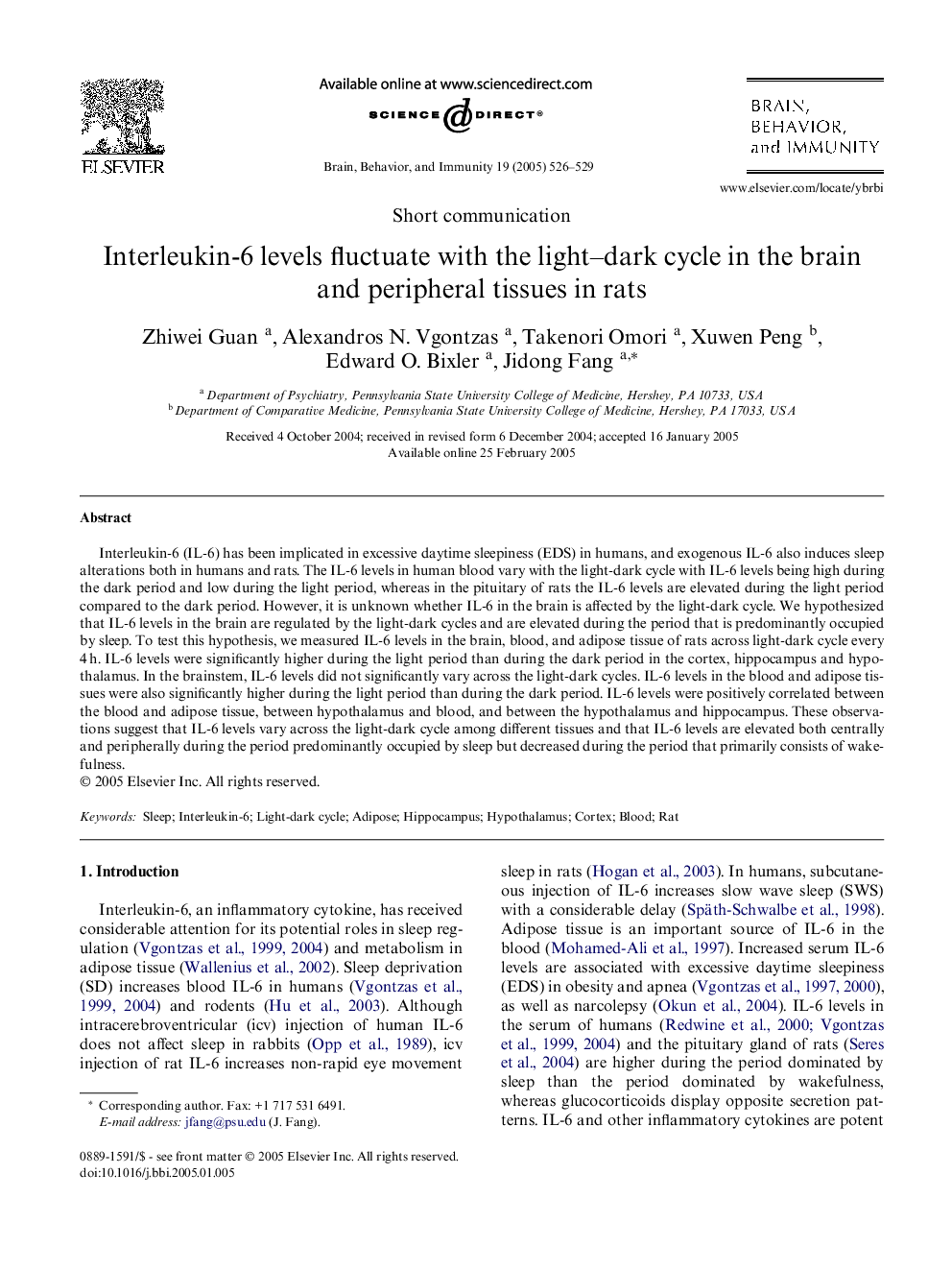| Article ID | Journal | Published Year | Pages | File Type |
|---|---|---|---|---|
| 10455115 | Brain, Behavior, and Immunity | 2005 | 4 Pages |
Abstract
Interleukin-6 (IL-6) has been implicated in excessive daytime sleepiness (EDS) in humans, and exogenous IL-6 also induces sleep alterations both in humans and rats. The IL-6 levels in human blood vary with the light-dark cycle with IL-6 levels being high during the dark period and low during the light period, whereas in the pituitary of rats the IL-6 levels are elevated during the light period compared to the dark period. However, it is unknown whether IL-6 in the brain is affected by the light-dark cycle. We hypothesized that IL-6 levels in the brain are regulated by the light-dark cycles and are elevated during the period that is predominantly occupied by sleep. To test this hypothesis, we measured IL-6 levels in the brain, blood, and adipose tissue of rats across light-dark cycle every 4Â h. IL-6 levels were significantly higher during the light period than during the dark period in the cortex, hippocampus and hypothalamus. In the brainstem, IL-6 levels did not significantly vary across the light-dark cycles. IL-6 levels in the blood and adipose tissues were also significantly higher during the light period than during the dark period. IL-6 levels were positively correlated between the blood and adipose tissue, between hypothalamus and blood, and between the hypothalamus and hippocampus. These observations suggest that IL-6 levels vary across the light-dark cycle among different tissues and that IL-6 levels are elevated both centrally and peripherally during the period predominantly occupied by sleep but decreased during the period that primarily consists of wakefulness.
Related Topics
Life Sciences
Immunology and Microbiology
Immunology
Authors
Zhiwei Guan, Alexandros N. Vgontzas, Takenori Omori, Xuwen Peng, Edward O. Bixler, Jidong Fang,
